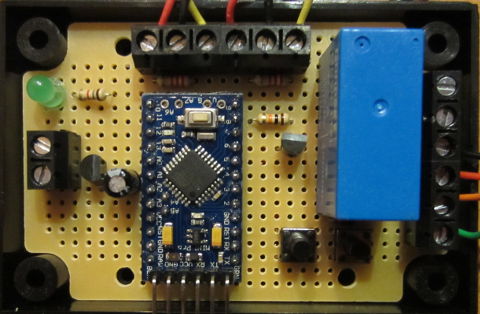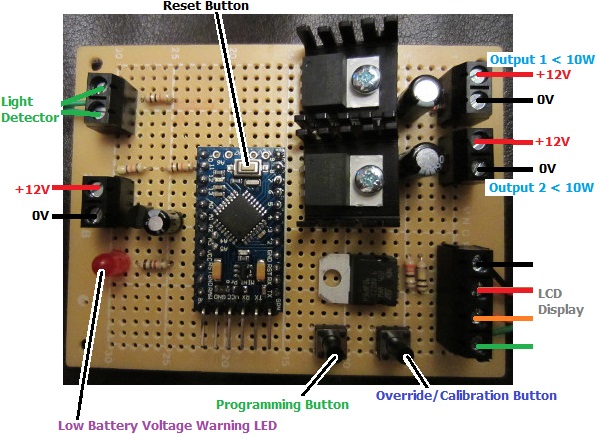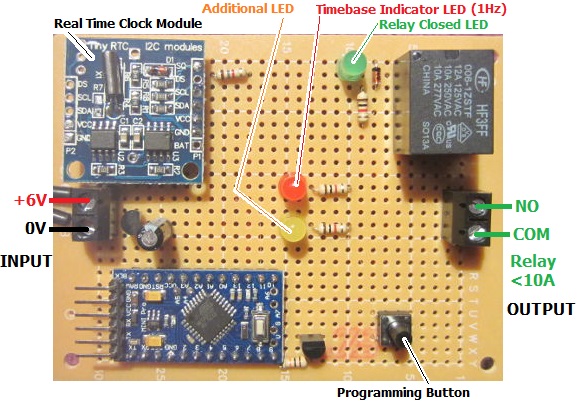Our 2014 Solar Water Heating Pump Controller with LCD is one of our best selling products. We recently receive an original request for a modified version of this controller for use with a solar heated swimming pool in France. This particular system has a 12V powered submersible pump which has a maximum duty cycle of 15 minutes – i.e. if the pump is run for longer than 15 minutes continuously it could be damaged.
In general the pump in such a system will not run for that long, but it is likely to happen from time to time – particularly in the spring when the pool is cool, but the panel is getting well heated in the middle of the day. Therefore something needs to be added to the controller to protect it from this eventuality. Also, this controller has a manual override to force the pump to run, and this could be forgotten and left on for hours burning out a vulnerable pump if there is no protection.
Pictured above is controller board we made – this time with a relay to switch the current to the pump rather than the standard MOSFET 2A 12V output. We also added waterproof temperature sensors to make the device suitable for pool use.
To the standard user programming options we added the ability to set the maximum number of minutes the pump may run continuously, and the number of minutes the pump must then be left off before it can be turned on again. These values can be set to anything from 1-60 minutes each to give flexibility should the pump need to be changed in the future. The user of this controller intends to set a 12 minute maximum run time and a 3 minute forced off time. (As the 2014 controller is Arduino based, we used the millis() function to keep track of time while the pump is running).
If you need any kind of solar water heating pump controller, please email details of your exact requirements to neil@reuk.co.uk.












